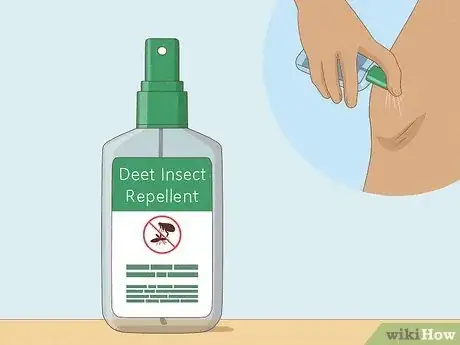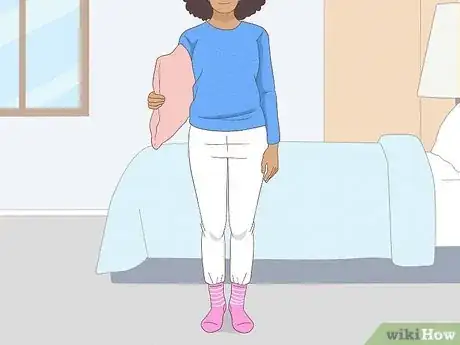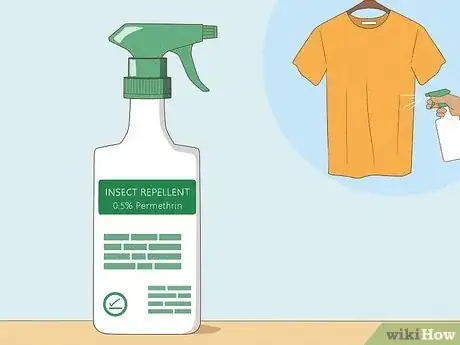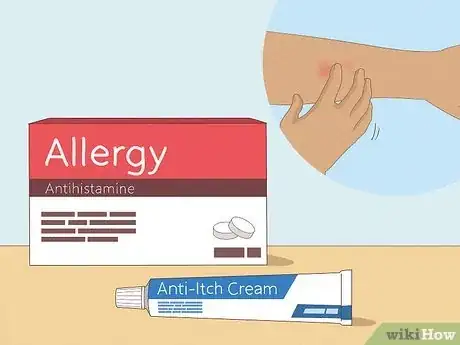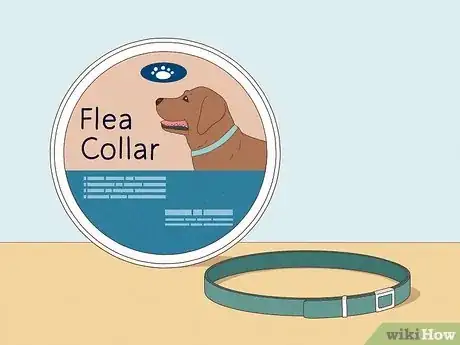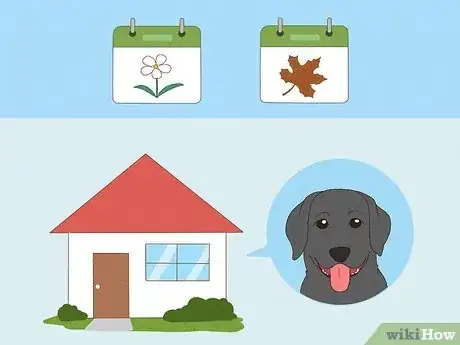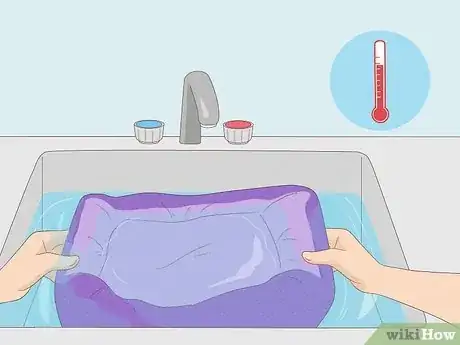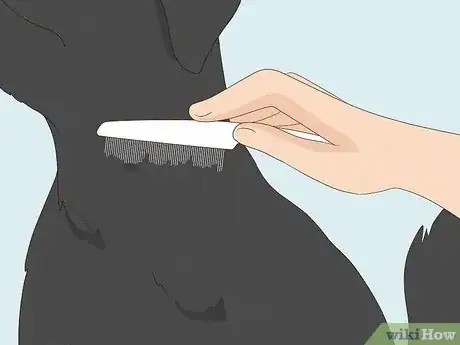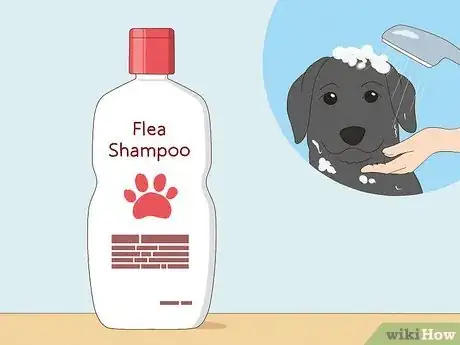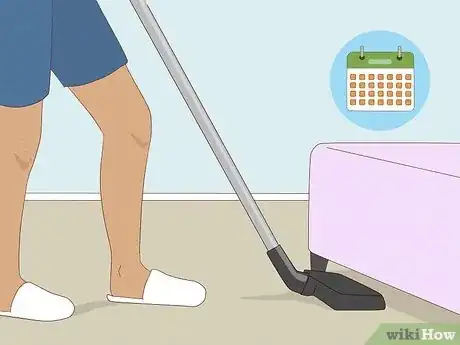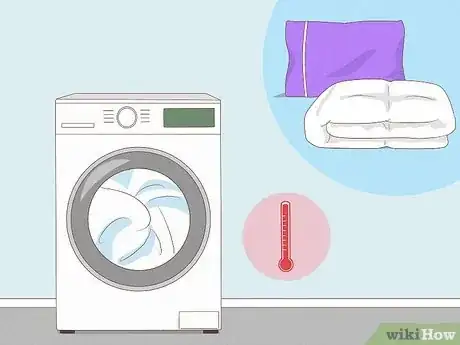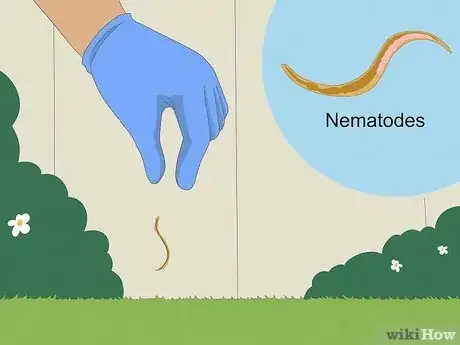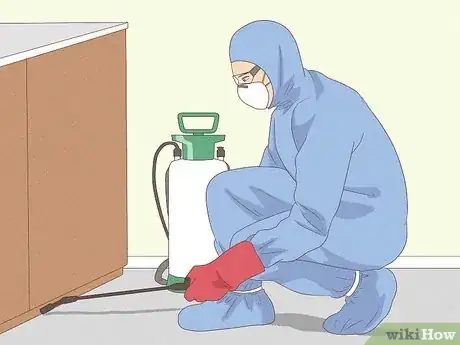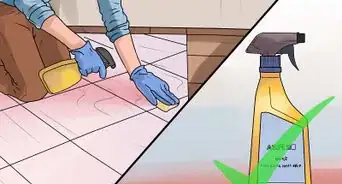This article was co-authored by Scott McCombe and by wikiHow staff writer, Hannah Madden. Scott McCombe is the CEO of Summit Environmental Solutions (SES), a family-owned local pest solutions, animal control, and home insulation company based in Northern Virginia. Founded in 1991, SES has an A+ rating with the Better Business Bureau and has been awarded “Top Rated Professional,” and “Elite Service Award" by HomeAdvisor.
There are 11 references cited in this article, which can be found at the bottom of the page.
wikiHow marks an article as reader-approved once it receives enough positive feedback. This article has 18 testimonials from our readers, earning it our reader-approved status.
This article has been viewed 577,960 times.
Dealing with itchy, annoying flea bites? These pesky pests are an irritant for many, but fortunately, there are expert-backed ways to get them to stop biting you. In this article, we’ll tell you how to prevent bites on your skin, as well as how you can treat your pets and clean your home to get rid of infestations. Keep reading to stop these troublesome insects fast.
Steps
Preventing and Treating Flea Bites on Your Skin
-
1Spray insect repellent onto your skin. Many insect repellents help ward off fleas, and they’re safe to use on your skin. Look for a repellent with an active ingredient of DEET, Picaridin, IR3535, lemon oil, eucalyptus oil, PMD, or 2-undecanone to make sure it’s effective.[1]
- If you’re using sunscreen as well as bug spray, always use sunscreen first.
-
2Cover your skin with long clothing to deter fleas while you sleep. Fleas have a tough time biting through thick clothing. If you’re going to sleep and you know there are fleas nearby, wear long sleeves and long pants. Tuck your pants into your socks to protect your ankles and your feet.[2]
- Fleas can bite through thin clothing, but not thick layers. The more clothing you wear to bed, the better.
Advertisement -
3Treat your clothing with 0.5% permethrin. Give yourself extra protection in flea-infested areas by spraying your clothing and your gear with insect spray. Lay your clothing out in a well-ventilated area, then spray a light amount of 0.5% permethrin all over (front and back). Let the clothing air dry completely before you wear it.[3]
- 0.5% permethrin will last through multiple washes, so there’s no need to treat your clothing every time.
- Permethrin is safe to use on clothing, but it’s not safe for use directly on your skin. It’s also not safe for use on bedding or mattresses.
-
4Treat flea bites with anti-itch creams and antihistamines. Flea bites are often red, itchy, and raised on your skin. Use an anti-itch cream on your flea bites, and take an antihistamine to reduce itching and swelling.[4]
- If your flea bites are oozing or change colors, they may be infected. Make an appointment with your doctor right away.
Preventing and Treating Pets for Fleas
-
1Visit your vet to get monthly flea control products. If your pet has fleas or is prone to fleas, talk to your vet about the treatment option that is right for them. They might recommend topical medication, oral medication, or even injectable medication.[5]
- You can also purchase topical or oral flea medication over the counter. However, you should still ask your vet for their recommendation so you can buy the product that's right for your pet.[6]
- Be sure to follow your vet’s recommendation on the proper dosage for your animal. Most medications are given by weight, and treating your pet with too high of a dosage could make them sick.
- Try to treat every animal in your home for fleas. Otherwise, the non-treated animals will quickly spread the fleas back to your treated animals.
-
2Try a flea collar. Flea collars contain a slight amount of flea medicine that’s distributed onto your pet’s skin over time. Flea collars from your veterinarian are the most effective.[7] You can find flea collars over the counter or at pet stores, but they may not work quite as well.
- Most flea collars are not safe for cats. If you have a cat that you’d like to treat with a flea collar, talk to your vet first.
-
3Keep your pet inside when fleas are rampant.[8] Fleas are usually at their worst from early spring to early fall. They like warm, humid weather, preferring temperatures between 70 and 90 °F (21 and 32 °C) and 75% humidity.
-
4Clean your pet’s bedding in hot water. If your pet has fleas, then their bedding probably has fleas, too. Wash your pet’s bedding or favorite blanket in hot water to kill the live fleas and any of their eggs. Try to wash your pet’s bedding as often as once a week when you notice they’re infested.[9]
- Most people get bitten by fleas because their pets have fleas. If you can treat your pets quickly, you can get away without any bites.
-
5Use a flea comb to remove fleas from your pets. Flea combs are combs with small metal teeth that can trap and kill fleas. Grab your comb and gently run it along your pet, focusing on areas that fleas are most likely to congregate, like the neck, the hindquarters, and the face. Dip the comb into hot soapy water to kill live fleas and their eggs.[10]
- Hair can pass through the comb’s teeth, but not fleas. Even if your pet has thick, long hair, a flea comb will do the trick.
-
6Give your pet a flea bath. Flea shampoo uses citrus and other natural ingredients to kill fleas and their eggs. Give your pet a bath at home, but instead of their usual shampoo, use flea shampoo. Let the shampoo sit for 5 to 10 minutes to kill the fleas and their eggs.[11]
- Take extra care to wash your pet’s head after you've washed their body. Fleas might try jumping onto the head to avoid being killed.
- Be sure to follow the directions for use and frequency and completely rinse the product off of your pet.
Cleaning and Treating Your Home and Yard
-
1Vacuum your house daily. While it might seem like a lot, vacuuming gets rid of live fleas and their eggs. Give your entire home a vacuum, including any carpet, soft furniture, and baseboards. Vacuum every day for a few weeks to make sure a new cycle of fleas can’t establish themselves.[12]
- When you’re done vacuuming, take the bag to your outdoor garbage right away. That way, if any fleas survive, they won’t be able to crawl back into your home.
-
2Wash your bedding and upholstery in hot water. Strip as much of the fabric off your couches, chairs, and bed as you can. Then, wash it in the hottest water that your washer has to kill fleas and their eggs.[13] Washing your bedding is especially important if you are being bitten while you sleep. If fleas are living in your bed, they may be crawling out at night to bite you.
- Gather up any clothes that may be lying around, especially piles of laundry. Fleas love to nest inside of large, dark piles of clothing.
-
3Use diatomaceous earth to kill fleas inside. Diatomaceous earth (DE) is a natural and safe alternative for killing fleas in your house. Purchase some food-grade DE so it’s safe to use around pets and children, then sprinkle it on your carpets, baseboards, and anywhere else you’ve noticed fleas congregating. Let it sit for about 2 days, then vacuum it up.[14]
- DE works by drying out fleas from the inside out.
-
4Add nematodes to your yard. Nematodes are small worms that feed on fleas. Visit your local garden center to get some of these flea predators, then release them in your yard.[15] Nematodes are very beneficial for your soil and plant health, and will continue to add nutrients to your soil even after the fleas are gone.[16]
-
5Contact a professional to exterminate large infestations. If home remedies aren’t working and you’re still being bitten by fleas, it’s time to call in the experts. Ask them to treat your home with chemicals to kill the fleas and their eggs.[17] You’ll probably have to vacate your home for about 12 hours and take any pets with you.
Expert Q&A
Did you know you can get expert answers for this article?
Unlock expert answers by supporting wikiHow
-
QuestionWhat's a safe distance for clothes and a bed to protect them from fleas?
 Pippa Elliott, MRCVSDr. Elliott, BVMS, MRCVS is a veterinarian with over 30 years of experience in veterinary surgery and companion animal practice. She graduated from the University of Glasgow in 1987 with a degree in veterinary medicine and surgery. She has worked at the same animal clinic in her hometown for over 20 years.
Pippa Elliott, MRCVSDr. Elliott, BVMS, MRCVS is a veterinarian with over 30 years of experience in veterinary surgery and companion animal practice. She graduated from the University of Glasgow in 1987 with a degree in veterinary medicine and surgery. She has worked at the same animal clinic in her hometown for over 20 years.
Veterinarian Unfortunately there is no safe distance. Fleas are notorious at being athletic jumpers and move around freely from one spot to another. In addition, fleas like to live in the environment, especially soft furnishings — where they lay eggs which will hatch into the next generation. The best way to protect your bedding and clothes is to spray an effective environmental spray which kills larvae and has a persistent action for seven – 12 months. Your vet can suggest an appropriate product.
Unfortunately there is no safe distance. Fleas are notorious at being athletic jumpers and move around freely from one spot to another. In addition, fleas like to live in the environment, especially soft furnishings — where they lay eggs which will hatch into the next generation. The best way to protect your bedding and clothes is to spray an effective environmental spray which kills larvae and has a persistent action for seven – 12 months. Your vet can suggest an appropriate product. -
QuestionWhat can you use to stop fleas biting you?
 Pippa Elliott, MRCVSDr. Elliott, BVMS, MRCVS is a veterinarian with over 30 years of experience in veterinary surgery and companion animal practice. She graduated from the University of Glasgow in 1987 with a degree in veterinary medicine and surgery. She has worked at the same animal clinic in her hometown for over 20 years.
Pippa Elliott, MRCVSDr. Elliott, BVMS, MRCVS is a veterinarian with over 30 years of experience in veterinary surgery and companion animal practice. She graduated from the University of Glasgow in 1987 with a degree in veterinary medicine and surgery. She has worked at the same animal clinic in her hometown for over 20 years.
Veterinarian
Warnings
- Read the warning labels and instructions for any products prior to use. Many include warnings about using the product around pets and children.⧼thumbs_response⧽
- Be sure of your pet’s weight before using flea treatments at home. This will ensure that you use the proper dosage for your pet’s size.[18]⧼thumbs_response⧽
References
- ↑ https://wwwnc.cdc.gov/travel/page/avoid-bug-bites
- ↑ https://wwwnc.cdc.gov/travel/page/avoid-bug-bites
- ↑ https://wwwnc.cdc.gov/travel/page/avoid-bug-bites
- ↑ https://dermnetnz.org/topics/flea-bite
- ↑ https://www.rspca.org.uk/adviceandwelfare/pets/general/fleas
- ↑ https://www.fda.gov/consumers/consumer-updates/safe-use-flea-and-tick-products-pets
- ↑ https://www.akc.org/expert-advice/health/how-to-get-rid-of-fleas/
- ↑ https://www.epa.gov/pets/controlling-fleas-and-ticks-around-your-home
- ↑ https://www.rspca.org.uk/adviceandwelfare/pets/general/fleas
- ↑ https://www.epa.gov/pets/controlling-fleas-and-ticks-around-your-home
- ↑ https://www.drugs.com/vet/flea-tick-shampoo.html
- ↑ https://www.epa.gov/pets/controlling-fleas-and-ticks-around-your-home
- ↑ https://www.epa.gov/pets/controlling-fleas-and-ticks-around-your-home
- ↑ http://npic.orst.edu/factsheets/degen.html
- ↑ https://www.peta.org/living/animal-companions/natural-pet-remedies-flea-tick-control/
- ↑ https://www.nrcs.usda.gov/wps/portal/nrcs/detailfull/soils/health/biology/?cid=nrcs142p2_053866
- ↑ https://www.cdc.gov/fleas/getting_rid.html
- ↑ https://www.fda.gov/consumers/consumer-updates/safe-use-flea-and-tick-products-pets
About This Article
To prevent flea bites, start by treating your pets with flea medication to get the infestation under control. Next, vacuum your home thoroughly every day to get rid of fleas living in the carpets. Then, strip the fabric off your couches, chairs, and bed and wash it in hot water to kill fleas and their eggs. You can also use diffusers with essential oils like lavender, eucalyptus, cedar wood, lemon, or peppermint to naturally repel fleas indoors. For tips on treating your yard, read on!
